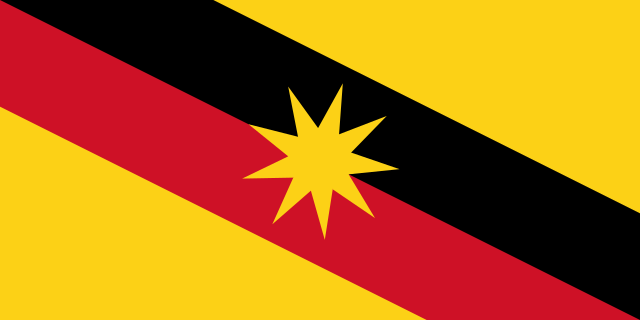ARTS AND CULTURE INFORMATION GATEWAY
Immerse yourself in the colorful world of art and culture! From traditional heritage to contemporary works, discover uniqueness that reflects the nation's identity and identity
PERANAN TOPENG SAGU MELANAU UNTUK KAUM DI SARAWAK, BORNEO
Picture
1
Video
No record
Today's Visitor
4
Number of Visitors
871
Introduction and history
The Melanau are one of the largest ethnic groups in Sarawak, residing along coastal areas including Matu Daro, Rejang, Mukah, and several other districts. Among them, there are Muslims and Christians, as well as those who practice animism, worshipping the spirits known as Ipok, manifestations of natural forces and powers. In Melanau belief, Ipok consists of Ipok Laut (sea spirit), Ipok Balau (forest spirit), Ipok Sarauang (sky spirit), and Ipok Iyang (earth spirit).
In traditional medicine, the Melanau believe that illness can result from an imbalance between the body and natural energies due to disturbances from malevolent spirits. Therefore, the Adat Bebayuh exists as an animistic healing practice of the Melanau people to cure ailments.
-
-
-
Day One
Upon being informed that someone has fallen ill and requested the bomoh (healer) for assistance, the bomoh begins the ritual alone in his home that evening. During this solitary ritual, the bomoh interacts with spiritual entities to seek their assistance and negotiate for permission to perform the Bebayuh ceremony on the patient.
Day Two
On the second day, the healing ceremony begins, involving both the patient and the bomoh. The treatment may be conducted either at the bomoh's home or at the patient's residence, depending on the preferences and suitability for both parties. That evening, the bomoh informs the patient’s family about the materials and requests made by the spiritual entities to proceed with the healing. All requested items and materials must be prepared to continue the treatment the following night. At this stage, the Seladai Dance will be performed.
Day Three
On the third day, the materials for the Bebayuh ceremony are handed over to the bomoh. The required items include mayang pinang (betel nut fronds), pucuk mentel (young leaves), isem pisai (woven dried palas leaves resembling betel nut fronds), jasmine flowers, incense, the gendang genayang drum, candles, and glass shards placed on a white cloth. Incense is burned to commence the ritual with the chanting of mantras in the bomoh’s spirit language, invoking his guardian spirit. Simultaneously, the bomoh beats the gendang genayang, used to detect the illness afflicting the patient. A candle is then lit inside the drum and placed over the bomoh’s face. Other musicians play traditional instruments like the tadak, gendang tabuan, kulintangan, beduk, tetawak gong, and canang during the ceremony.
Once the illness detection ceremony is completed successfully, the bomoh swallows the candle while the mayang pinang is wrapped around the patient’s body. In this state, the Ipok spirit is believed to enter the patient’s body, initiating the healing process. The patient then steps on glass shards scattered on a white cloth. Next, the Seladai dance is performed by seven unmarried men and seven unmarried women. During this performance, the bomoh circles the dancers with the isem pesai (woven palas leaves) in hand.
Day Four to Day Six
The activities and rituals on the fourth to the sixth nights are the same as those on the second night. During this period, the patient must adhere to specific taboos, including refraining from consuming stingray and shark, as well as avoiding beans and eggs.
Day Seven
The seventh night marks the final night, known as the pemutus ubat (medicine-severing) ceremony. To ensure the effectiveness of the bomoh's treatment, the patient must provide specific offerings, including small gold pieces, a small spear made from bone as food for the spirit, and a live chicken. With this, the Bebayuh ceremony, a traditional healing ritual for treating mystical ailments within the traditional Melanau community, comes to an end.
-
Reference Source
i. Bahan Bacaan
Abdillah Haji Dolhan. (1966). Melanau culture : Bebayuh : Traditional Melanau Healing Ritual. Pustaka Negeri Sarawak. https://pustaka.librarynet.com.my/Angka.sa2/pnssibu/OpacBibDetail.htm?bibId=679501
Abdul Walid Ali, Awangko Hamdan & Hishamuddin Siri. (2020). Peranan Topeng Sagu Melanau untuk Kaul di Sarawak, Borneo. Borneo International Journal, 2(4), 26-36. https://www.researchgate.net/publication/345310126_Peranan_Topeng_Sagu_Melanau_untuk_Kaul_di_Sarawak_Borneo
Location
State JKKN Contact Information
Encik Boniface Anak Babai
Cultural Officer
Jabatan Kebudayaan dan Kesenian Negara, Sarawak
Tingkat 5 Bangunan Sultan Iskandar,
Jalan Simpang Tiga,
93000, Kuching,
SARAWAK
019-2399682/082-422006
Use the form below to contact the Informant/Figure/Editor/Researcher directly. We will respond to your inquiry as soon as possible!







